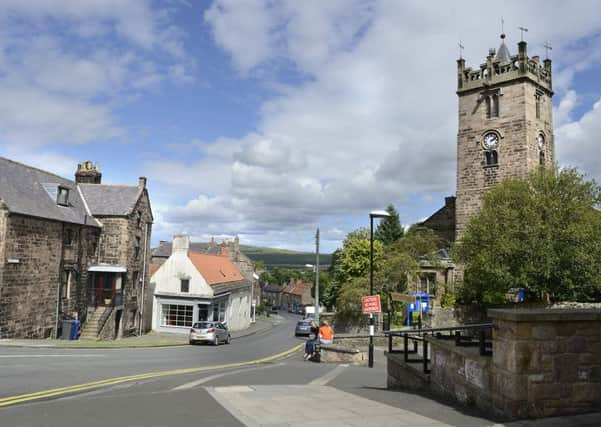Wooler, History Society


His ingredients were flour, yeast and water – no sugar, salt or additives – all pure and healthy.
While kneading his dough, Dave explained the difference between the ancient stone-milling of grain and the modern, machine-cutting process.
Advertisement
Hide AdAdvertisement
Hide AdHe told of the ancient bread-making methods versus modern commercial products, and of the laws governing manufacturing of bread. If it is made on the retail premises, labels do not have to display the ingredients, and certain vitamins must be added to white flour, but exist naturally in traditionally milled wholemeal flour.
Rye or barley would once have been commonly milled for baking bread. However, it is now mostly made from wheat. Spelt is increasingly popular and the rise in demand has increased its price considerably.
The properties of grain vary greatly according to weather conditions, and latitude has an influence.
Much of the ‘strong’, high protein flour used in the UK has its origin in Canada. The original clipper ships, such as the Cutty Sark, were built for carrying grain from the USA, Canada and Australia, rather than tea as commonly thought.
Advertisement
Hide AdAdvertisement
Hide AdWater-powered mills have existed since pre-Roman times, and before then a gin driven by men or animals would have been used. The engineering features of mills were explained. Mill-stones are generally of sandstone or Derbyshire gritstone. The space between the grinding mill-stones requires careful adjustment to create varying products.
River levels also affect the milling process. Gears, from below, control the rotation of the top stone, which can turn at 60 to 80 times a minute on a static bed-stone, which becomes worn away and polished. Dave showed hand-tools used to dress the stones and recreate the ridges and furrows for grinding.
A mill at Heatherslaw is likely to be over 1,000 years old, and probably one of the oldest to survive. It is one of 13 that existed on the River Till. A mill existed in the Flodden era, when it was in Scottish hands and probably provided rations for soldiers.
Dave has researched the diaries of the Black family, a land and mill-owning family, which describe extensions at Heatherslaw from its much smaller origins. The two outer mill wheels were under a lower floor to protect them from the drying elements of the sun.
Advertisement
Hide AdAdvertisement
Hide AdAt Heatherslaw Mill, Dave assesses his grain and chooses it from local sources. A successful end product – flour or bread – demands good grain and good millstones.
In Chaucer’s day, a miller was an important person. He commanded finances and applied restrictive regulations to the populace, who were bound to take their grain to the miller since their own means of milling were confiscated.
The audience enjoyed an enthusiastic, interesting, contemporary Miller’s Tale with humorous anecdotes from a well-informed speaker. Dave Harris Jones is vice-chairman of the Corn Millers’ Guild.
He recommended a visit to millsarchive.org.uk